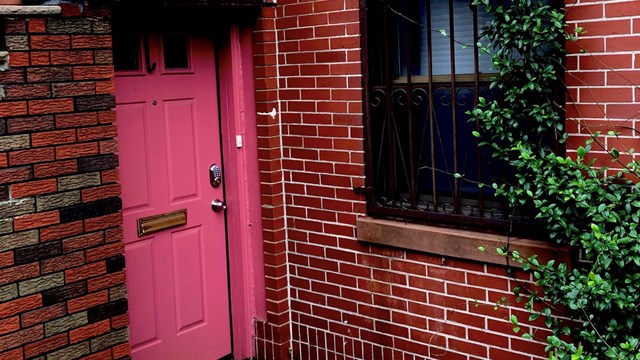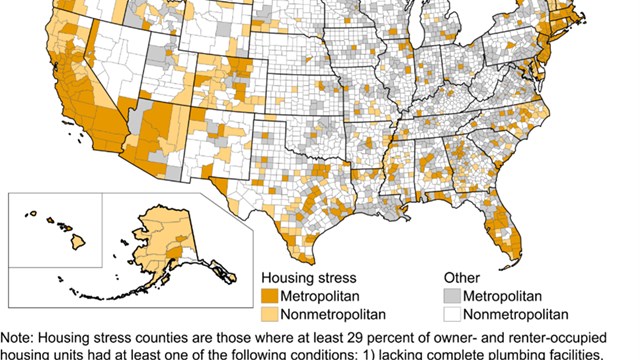New York City's real estate market has certainly seen its bumps and bruises over the last couple of years, but according to sales agents in the Manhattan luxury market, buyers are still buying – but their faces have changed, and they're operating with a little less of the irrational exuberance that characterized the market in the early 2000s.
Toward the height of the city's unprecedented real estate boom a few years ago, media outlets and consumers took keen interest in breathless descriptions of the city's ultra-luxe living spaces and the dizzying sums paid for them. From old-money Park Avenue mansions to sprawling Downtown mega-lofts, for a time space-starved New Yorkers treated the property listing pages almost as a new form of porn.
Now that the proverbial bubble has burst however, the jaw-dropping apartments of recent years are sitting on the market longer and seeing their price tags adjusted downward as buyers shy away from the cost of some of the city's most luxurious properties—not just for financial reasons, but because conspicuous consumption is so 2005.
Slow on the Draw
According to Kirk Henckels, executive vice president and director of Stribling Private Brokerage in New York, the biggest sale in 2009 was in December for $40 million.“It was a high, full floor cooperative at 820 Fifth Avenue which is one of the most prestigious buildings in New York,” he explains. “This price works out to over $5,000 per square foot.”
He says that the second highest sale, also in December, was for a penthouse at 15 Central Park West that sold for $38.6 million.The highest cooperative sales in 2008 and 2007 were $48.8 million and $37.5 million, respectively.
“The downturn in the market has not dramatically affected the highest deals, but it has caused the number of such sales to decline dramatically,” says Henckels. “However, momentum in this highest sector has picked up as we entered the first quarter.”
Although the numbers are still impressive and the increase in momentum in the new quarter is promising, W. Danny Sedjati, CEO of the Manhattist, Inc. in New York City, a real estate company that deals only with listings of high-end properties over $10 million, says that luxury buyers who were once quick to make the move to buy a piece of real estate that they found appealing are now more cautious before signing on the dotted line.
“Just like many of us, they are looking for a good deal,” he says. “Prior to the recession, they were willing to pull the trigger right away if the property was in a good neighborhood and had good amenities.In today's market, however, they are looking beyond just what the eyes can see.They want to know how much can the property sell for in three to seven years.”
Sedjati explains that he had a few buyers eyeing a property in the Time Warner Center building on 59th Street and other similar properties in the area.Before they viewed the building, Sedjati was asked to conduct a full analysis of the property, from current demographics to rental projections.
“Even after they had seen the area and property themselves, they were still not convinced and asked us to do more analysis,” he explains. “This kind of behavior usually occurs when someone is purchasing a commercial property—not a residential with a price tagof $6 million to $25 million.”
He explains that not all of his buyers are like this, but many come with their own luxurious demands. “We had a buyer who wanted to have a fireplace in the bathroom and a man-made waterfall,” he explains. “Making a waterfall can be achieved, but finding a building that will allow you to build a fireplace in the bathroom is hard.”
The market is on the uptick because, according to Frances Katzen, an executive vice president with Prudential Douglas Elliman and author of The Katzen Report, sellers are now going straight to offering what the buyers want when it comes to price. Even though the high priced sale from last year was at an impressive $5,000 per square foot, sellers are still adjusting their pricing to get units sold.
“What we’re seeing is that the buyer and the seller are in sync—but it won’t last for very long,” she says. “Sellers have adjusted themselves appropriately because they know that buyers are now only willing to spend $2,000 per square foot for a unit that would’ve sold for $3,000 per square foot.”
“The bottom line is there were 23 units—a record—sold above $10 million for 2009, so there is an uptick. Buyers of luxury properties think, ‘If the market is about to be in a recession, how much more am I really going to save—$20 to $30 per square foot?' When you want a deal, you want to buy and now they're getting what they want for a little less.”
The New Luxury Buyer
The uptick is good news for the market, of course, but who exactly is buying these multimillion dollar properties? All interviewed for this article agree that foreign buyers make up most of the current batch of luxury customers. Sedjati also says that his firm caters to more foreign buyers than before, too, since Manhattan properties are still considered the gold standard for many people, regardless of their country of origin.
A recent study, the 2009 National Association of Realtors (NAR) profile of international home buying activity, shows that approximately four percent of existing home sales in the U.S. involved non-resident foreign buyers. The NAR states that international residential transactions in the U.S. occur for a variety of reasons—foreign employees of international corporations who need housing while working outside of their home countries, foreign residents buying second homes or vacation homes and foreign-born nationals seeking residences for immigration. The home ownership rate of immigrants surpasses that of the national average with over 80 percent of foreign-born U.S. residents owning a home—far higher than the national home ownership rate of 67 percent.
In Sedjati’s Time Warner purchase, the buyers were foreigners, but Sedjati says it’s the currently-less-than-almighty dollar that’s their attraction to buying in New York. “They are bullish with Manhattan properties because over the long term, you can still get a good rate of return,” he says. “The weak dollar exchange ratealso plays a role but the biggest reason foreigners are choosing New York City or the U.S. in general over other countries is political stability.They know that ten years after they purchase the property, the country or city will be safe, and the laws will still work.”
Henckels says that while foreign buyers tend to purchase condominiums for investment and privacy purposes, they have also been active in the cooperative market as they buy for personal use.“Going forward, however, there is concern about the Wall Street segment as firms ask their employees to lay low and not make big, visible purchases,” he says.
Luxury Adapts
To succeed in any business when the market changes, business persons must adapt their working practices in order to stay afloat. The luxury real estate market isn’t any different. Katzen, who averages more than 100 transactions per year with listings in Dubai, Cannes and Sydney as well as Manhattan and the Hamptons, says that agents need to care more about the clients than the sale.
“I want to keep the relationship,” she says. “I have to work very cleanly and transparently. Prices are going to be a big issue, and I need to give an accurate statistic of what [buyers] should be offering.”
Agents do work hard for their money and Henckels says that thanks to today’s economy, they are working even harder. “High-end brokers have taken note that the recovery is building from the bottom,” he says. “Therefore they are taking lower-priced listings than they might have before. We are all working harder for each deal.”
Moving forward, Sedjati says he thinks the market will be good and a broker will always have clients as long as they give them good service and value. “In the luxury market, a client has many options, so it's our job to show them the most valuable piece of property that not only looks luxurious but also something that will remain that way financially in the future,” he says. “Real estate brokerage is a sales industry—and that means you need to be a good servant for your clients.”
Lisa Iannucci is a freelance writer living in Poughkeepsie, New York and a frequent contributor to The Cooperator.







Leave a Comment